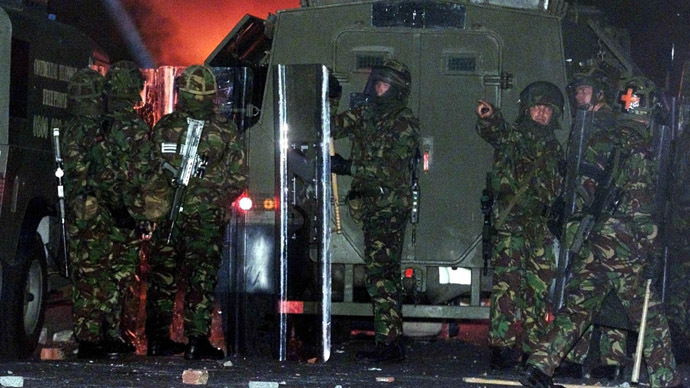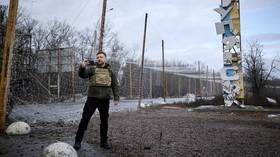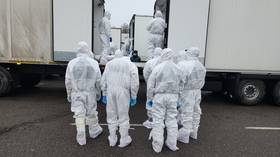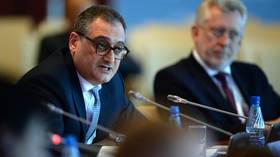‘Close, aggressive surveillance’: UK Special Forces back in Northern Ireland

British Special Forces soldiers are once again operating in Northern Ireland, allegedly, to counter violent Republican groups including the Real IRA, according to intelligence sources.
Quoted in the Daily Star newspaper, they said up to 60 members of the Special Reconnaissance Regiment (SRR) are in the region.
One source told the paper that heightened dissident activity and the increased terror threat were linked to the approaching 100-year anniversary of the 1916 Easter Rising – a period of Irish history which remains highly emotive.
Another described the unit’s role as “close, aggressive surveillance.”
The SRR replaced an earlier unit known as 14 Intelligence Company. Its creation in 2005 saw the specialist close surveillance role developed during the Troubles expanded for the War on Terror.
The same year it was reported the SRR had been involved in the counter-terrorist operation which eventually led to the gunning down in Stockwell tube station of Jean Charles De Menezes, an innocent Brazilian worker.
The regiment, the only British Special Forces unit to recruit women and estimated to be composed of between 500 and 600 personnel, has been deployed in Iraq and Afghanistan.
READ MORE: ‘Jihadi John’ accused MI5 of threats, denied extremism in tape recording
In August 2014, the SRR was reported to be hunting Islamic State militants, including Jihadi John, later identified as West Londoner Mohammed Emwazi.
Its forerunner – known colloquially as “14 Int” – was limited to operating in Northern Ireland.
Recently, there have been a number of damaging revelations and legal cases about covert British operations during the period of the Troubles.
In 2013, a BBC documentary uncovered claims that a secret army unit called the MRF was hunting and killing IRA members, and in the course of doing so may also have killed a number of innocent civilians.
Alongside their combat role, the hand-picked members of the MRF also carried out surveillance. In some cases while disguised as meths-drinking vagrants, at other times while pretending to be garbage collectors.
In February this year, the case of the Hooded Men made headlines again when human rights lawyer Amal Clooney – who is the spouse of actor George Clooney and has represented WikiLeaks editor Julian Assange – joined the legal team of 11 individuals who claim to have suffered torture while in the custody of British security forces.
READ MORE: 43yrs for justice: Ireland takes UK to human rights court over Hooded Men case
Of over 300 people rounded up in June 1971, twelve were selected for further interrogation. They were then subjected to stress positions, hooding, white noise and food, drink and sleep deprivation.
These methods were known as the Five Techniques and would later form the practical basis for the treatment of captives by the United States military and intelligence services during the War on Terror. They have become synonymous with the process known as extraordinary rendition.
In 1976, the men took their case to the European Court of Human Rights and won. The ruling was later overturned and it was subsequently ruled that while they had been subject to inhumane and degrading treatment, it did not constitute torture.













